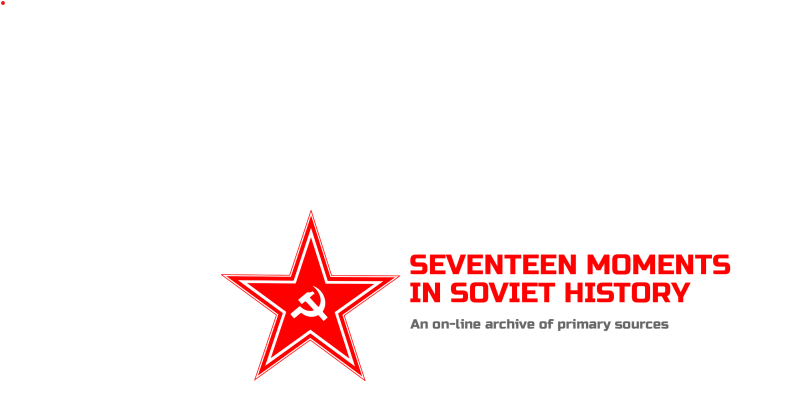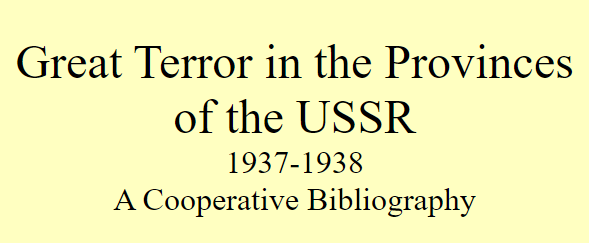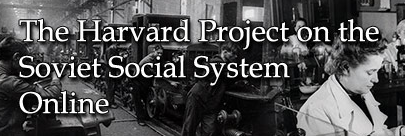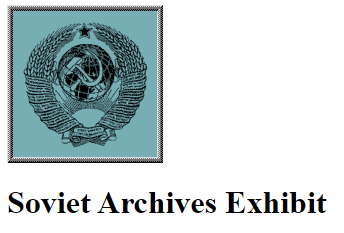Personal Narratives | Research Publications | Online Resources
Online Resources
This site is subtitled “An on-line archive of primary sources,” but it is much more than that. Two Soviet historians led the creation of this renowned website. One can also find useful glossaries, biographies, bibliographies as well as scholarly essays on important topics of Soviet history.
“The rarest type of information concerning the USSR consists of interviews with Soviet citizens. Such an interview, however, was made possible in France when a 33 year old Soviet physician was freed last year among a group of Russian prisoners, with the aid of comrades of the Fourth International. This interview was published in June-July-August issue of Quatrième Internationale organ of the European Executive Committee of the Fourth International.”
“The goal of this “collective bibliography” is to put together a bibliography of works on the Great Terror of 1937-1938 in the provinces of the Soviet Union. Special attention is given to regional works, because it is hard to find books and articles published in the local press, universities and publishing houses of the Russian Federation and the former Soviet republics.”

“ … RGASPI [The Russian State Archive of Social and Political History] documents from Stalin’s personal papers … [and] The Annals of Communism series [Yale University Press].”
“The Harvard Project on the Soviet Social System Online provides access to digitized materials selected from the Harvard Project on the Soviet Social System (HPSSS). The digital collection consists chiefly of summary transcripts of 705 interviews conducted with refugees from the USSR during the early years of the Cold War. A unique source for the study of Soviet society between 1917 and the mid-1940s, the HPSSS includes vast amounts of one-of-a-kind data on political, economic, social and cultural conditions. The HPSSS’s value is compounded by the fact that it was compiled in English and organized according to a rigorous social science framework, making it accessible to a broad range of students and scholars.”
“This exhibit is divided into many small displays divided on two floors. You can visit them in any order, or follow the footsteps for a guided tour. The guided tour will bring you back to this entrance room. Almost every display contains images of documents from the Soviet Archives. These images are too small to be readable, but when you click on them, you will get the full size originals (each are 100-400 Kb apiece; do expect some color changes). Hanging next to most displays is a translation on some scrolls, indicated by a small icon:
It should be noted that the images often show only fragments of the document, so don’t be confused if the translation doesn’t seem to match the image. You can start the guided tour on either of the two floors of the exhibit hall.”
“Several of the following versions of archival documents held by the HPCWS are stored as Portable Document Format (PDF) files. Viewing these files requires the free Adobe Acrobat Reader software.”

“Eto dokumental’naia igra pro glavnye sobytiia v Rossii XX veka. Vy sledite za sud’boi real’nogo cheloveka i delaete za nego vybor.” It is also a sequel to Mikhail Zygar’s ”1917: Svobodnaia istoriia”.





